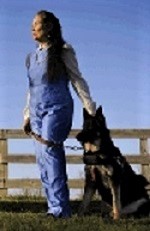
Editor’s Note: This list of guidelines and suggestions for passengers who are blind or visually impaired was compiled with a great deal of input from other travelers including Jay Stitely and Crista Earl.
Be Aware of Multiple Regulations
First, there are several sets of laws that you need to know about when traveling. As passengers pass through an airport they are uniquely governed. The building of an airport is under the Americans with Disability Act (ADA) laws. Security is under the Transportation Security Administration (TSA) or Homeland Security regulations. Once a passenger arrives on the airplane then travel is governed by the Air Carrier Access Act, which is under the Department of Transportation (DOT). See the list of resources at the end of this post.
Security
The following are guidelines that the TSA officers should follow but they do have some latitude.
Using a White Cane
- A person may put their long straight cane on the conveyor belt. The TSA officer should retrieve it prior to allowing the person through the magnetometer (arch), so that they may hand it to the person as they clear the arch.
- The person may walk through the arch with the cane, depending on the material makeup of the cane some do not set off the alarm, while others do. Touching the sides of the arch with cane or hand can trigger the alarm. In all cases, if the person/cane alarms they will need to be wanded and/or patted down.
- Some people choose to use their cane to travel to the arch, then hand it through the arch to the TSA office. If the cane sets off an alarm, then the TSA officer examines it and possibly wipes it down with a cloth testing for explosive residue. (Note: Some hand lotions contain nitrates which will show up positive with this test.)
- Once the cane has been cleared by the TSA officer, the person may step through the arch. After clearing, their cane will be returned.
Traveling with a Dog Guide

Some dog guide schools teach their clients to put the dog at sit, extend the leash to its maximum length, step through the arch, and then call the dog. In this way, the person does not need to be patted down, and a wand can be run over the dog to confirm that the alarm was set off by the metal framework in the dog’s collar and harness. Many TSA officers don’t immediately recall their training. That is probably because they rarely encounter a dog guide. So you can put your dog at sit, extend the leash, and say “I’ll go through first. I won’t ring. Then I will call her and she will ring.”
Importance of Being Polite
Be as polite as you can with the TSA officers. A, “Hello, How are you today?” goes a long way to minimizing potential issues. If you are uncertain, ask the TSA officer what he or she would like you to do. If you feel that things could have been handled more respectfully, request a supervisor and share your concerns. Ideally, the TSA officer is supposed to explain to you all that they want you to do, and explain what they are doing. If you feel that the supervisor did not adequately address your concerns, tell him you want to speak with a Complaint Resolution Official (CRO) from the airlines that you are flying. All airlines have to have CRO on duty at all times. This may take some time, but the goal is for this person to work with the passenger to bring about a satisfactory resolution.
One very important point, do not become loud, argumentative or try to proceed into the airport without being cleared by TSA officer. These types of behaviors, no matter how in the right you feel, will put you in serious jeopardy of missing your flight and/or even being detained and interviewed by police.
On the Aircraft
People are welcome to use a long cane but need to realize their options for safe placement in the airplane cabin are limited. According to the Air Carrier Access Act, canes may be stored in one of two places. Short canes can be placed on the floor and slid under the two or three joined seats in front of the person, without sticking out into the main cabin aisle. The second option is to lay it on the floor, against the outside wall of the plane (under the windows). During take-off and landing, it is recommended that you keep a foot on the cane so that it does not slide away from your seating area. Some airplanes do have a narrow closet by the first class section and the flight attendant may offer to keep the cane there, but they are not required to offer this. Nor can they require a passenger to place the cane there. Long straight canes may not be placed in the overhead. Should there be an accident and the overhead doors open, the cane can become spear-like and cause serious injury.
It is against the rules to force you to change seats if you don’t want to move, or use the bulk head seating. However, you can request changes in seating. The Air Carrier Access Act (listed in Resources under DOT) covers seat assignments. Also, your dog cannot obstruct an aisle or other area that must remain unobstructed in order to facilitate an emergency evacuation.
Resources About Air Travel
- Air Travel After Vision Loss
- Travel Articles on VisionAware
- DOT Rules
- New Rules About Websites and Kiosks
- TSA Travel Information
- Airport Design